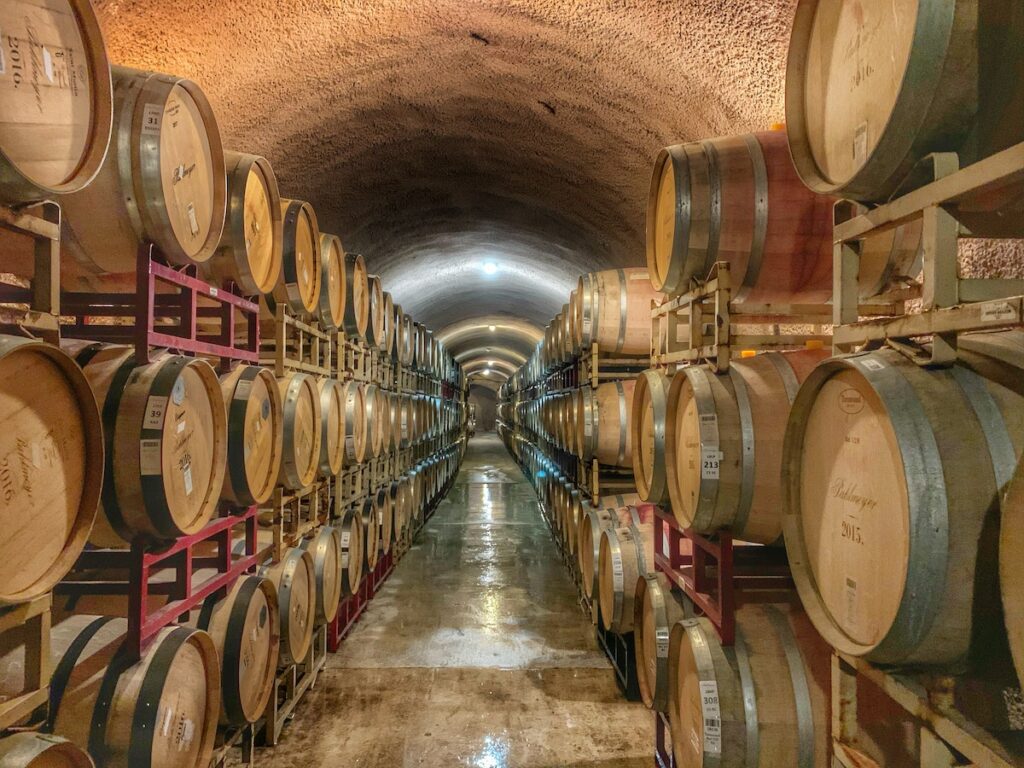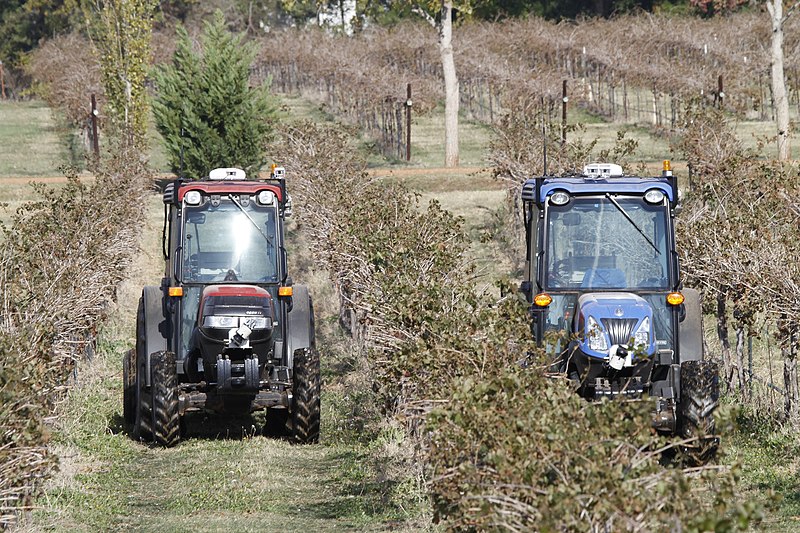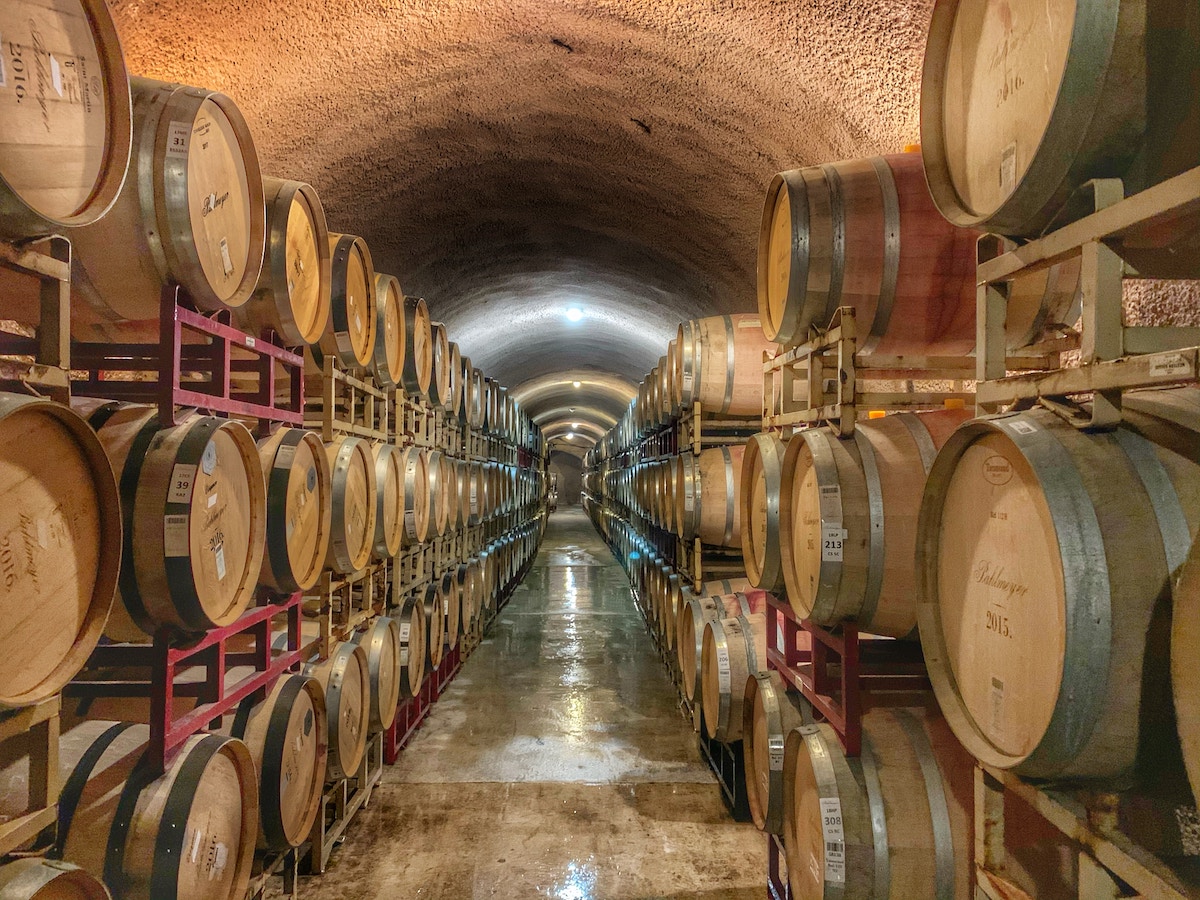
Texas may not be the first state that comes to mind when thinking of wine, but it has a rich history of winemaking dating back to the 1600s. The state’s unique climate and soil conditions make it an ideal location for grape cultivation, and over the years, Texas has become a respected wine destination.
The history of Texas wine is closely tied to the state’s early settlers, who brought vine cuttings with them from Europe. One of the first recorded wineries in Texas was established in the 1660s by Spanish missionaries near El Paso. However, it wasn’t until the mid-1800s that commercial winemaking began to take off in the state. Since then, Texas has seen its fair share of ups and downs in the wine industry, but it has emerged as a top wine-producing state in recent years.
Today, there are over 400 wineries in Texas, producing a wide variety of wines from traditional grapes like Cabernet Sauvignon and Chardonnay to lesser-known varieties like Viognier and Tempranillo. Texas wine has come a long way since its early days, and it continues to evolve and grow in popularity. In this article, we will explore the rich history of Texas wine and the pioneers who helped make it the respected wine destination it is today.
The Beginnings of Texas Wine Industry
The history of Texas wine dates back to the 1650s when Spanish missionaries produced some of the earliest recorded Texas wines near El Paso. However, it was not until the mid-1800s that settlers began to cultivate vineyards in Texas.
In 1833, the first recorded vineyard in Texas was established in the town of Goliad. The vineyard was planted by a French settler named Louis Castro, who brought grape cuttings from his native country. Despite initial success, the vineyard was abandoned after a few years due to the lack of demand for wine in the region.
It was not until the late 1800s that the Texas wine industry began to take shape. In 1883, Thomas Munson, a horticulturist from Denison, Texas, began experimenting with grape varieties that were resistant to phylloxera, a pest that had devastated many vineyards in Europe and the United States. Munson’s work was instrumental in reviving the Texas wine industry, and he is often referred to as the “father of the Texas grape industry.”
In the early 1900s, the Texas wine industry faced many challenges, including Prohibition and the Great Depression. However, the industry continued to grow, and by the 1970s, there were over 20 wineries in Texas. Today, Texas is the fifth-largest wine-producing state in the United States, with over 400 wineries and more than 9,000 acres of vineyards.
In conclusion, the Texas wine industry has a rich history that dates back to the early settlers and Spanish missionaries. Despite facing many challenges over the years, the industry has continued to grow and thrive, thanks to the hard work and dedication of pioneers like Louis Castro and Thomas Munson.
Influence of Thomas Volney Munson
Thomas Volney Munson was a viticulturalist and breeder of grapes who played a significant role in the history of Texas wine. His studies were instrumental in saving the European grape and wine industry from phylloxera, a vineyard blight that destroyed many vineyards in the late 1800s.
Munson became one of the leading experts in native American grape species. He experimented with grafting American rootstocks onto European vines, which proved to be resistant to phylloxera. He sent Texas grapevines to France, where they were used to fortify the Old World vineyards. In recognition of his contributions to viticulture, Munson was named a Chevalier du Mérite Agricole by the French government in 1888, becoming the second American to receive this honor after Thomas Edison.
Munson’s work helped to establish the Texas wine industry, and he is often referred to as the “Grape Man of Texas.” He founded the Denison Nursery in 1876, where he developed more than 300 grape varieties. Munson experimented on local rootstock but found little success because of the area’s weather extremes. He once remarked that the droughts, the hard winters, and the grasshoppers made life difficult for a nurseryman.
Munson’s contributions to the Texas wine industry are still celebrated today. The Texas A&M University System named a viticulture and enology program after him, and the Munson Memorial Vineyard was established in his honor. The vineyard is a living museum of grape varieties that were developed by Munson and is open to the public for tours.
Impact of Prohibition
Prohibition, which began in 1920 and lasted until 1933, had a significant impact on the wine industry in the United States. The sale, production, and transportation of alcohol were prohibited during this time, which led to the closure of many wineries and vineyards across the country.
In Texas, the prohibition movement influenced politics from the 1840s to the 1930s. The Texas Rangers were responsible for enforcing prohibition laws, and with the passage of the Dean Law in the 1920s, they effectively became prohibition officers. However, the Rangers had a history of violence against Mexican people, which was reported by the New York Times.
In California, the wine industry was hit hard by prohibition. Many wineries were forced to close, and vineyards were destroyed. However, some wineries were able to survive by converting their vineyards to grape juice production or by producing sacramental wine for religious purposes.
Despite the challenges, some wineries in Texas were able to survive by producing sacramental wine or by selling their grapes to producers in other states. The modern, pre-prohibition Texas wine industry was led by Clinton ‘Doc’ McPherson, a chemistry professor at Texas Tech University, who traveled to wine regions across the U.S. in search of the best grape varieties for Texas.
Overall, prohibition had a significant impact on the wine industry in the United States, including Texas and California. While many wineries and vineyards were forced to close, some were able to survive by adapting to the changing times.
Resurgence and Growth after Prohibition
The Prohibition era in the United States virtually eliminated Texas’ wine industry, which didn’t experience a revival until the 1970s. The first wineries to open after Prohibition were Llano Estacado and Pheasant Ridge wineries in the Texas High Plains appellation near Lubbock and the La Buena Vida winery in Springtown.
Despite the challenges faced by the Texas wine industry, it has seen significant growth in recent years. There are now over 500 wineries, 340 growers, and 5,140 acres devoted to grape-growing in the state. The Texas Hill Country, West Texas, the Texas High Plains, and the Panhandle are some of the regions that have seen the most growth in recent years.
The Texas High Plains appellation, located in the High Plains region, has become one of the most significant grape-growing areas in the state. The appellation covers over 8 million acres and includes the cities of Amarillo, Lubbock, and Plainview. The region is known for its hot, dry climate, which is ideal for growing grapes.
The Val Verde Winery in Del Rio is one of the oldest wineries in Texas, dating back to 1883. The winery survived Prohibition by producing sacramental and medicinal wines. Today, Val Verde Winery is still operating and producing award-winning wines.
Texoma AVA, located in North Texas, is one of the newest American Viticultural Areas (AVA) in Texas. The AVA covers over 300,000 acres and includes parts of Texas and Oklahoma. The region is known for its sandy soils, which are ideal for growing grapes.
October is designated as Texas Wine Month, a time to celebrate the bountiful harvest and the wines produced by that harvest. Wineries across the state offer special events and tastings during this month to celebrate the state’s rich wine history and its pioneers.
Pioneering Vineyards and Wineries
Texas wine has a rich history dating back to the 1600s when Spanish missionaries planted the first vineyards in the region. However, it wasn’t until the 1970s that the modern Texas wine industry began to take shape. Today, Texas is the fifth-largest wine-producing state in the US, with over 400 wineries and 9,000 acres of vineyards.
Some of the pioneering vineyards and wineries that helped establish the Texas wine industry include Val Verde Winery, Becker Vineyards, Llano Estacado Winery, Fall Creek Vineyards, and Messina Hof.
Val Verde Winery, founded in 1883, is the oldest continuously operating winery in Texas. The winery, located in Del Rio, has a long history of producing award-winning wines, including the first Texas wine to win a gold medal at an international wine competition.
Becker Vineyards, founded in 1992 by Dr. Richard Becker and his wife Bunny, is located in the Texas Hill Country. The winery is known for its award-winning wines, including the popular Viognier and Provencal-style rosé.
Llano Estacado Winery, founded in 1976, is one of the largest and most respected wineries in Texas. The winery, located in Lubbock, produces a wide range of wines, including Chardonnay, Cabernet Sauvignon, and Merlot.
Fall Creek Vineyards, founded in 1975 by Ed and Susan Auler, is located in the heart of the Texas Hill Country. The winery is known for its Bordeaux-style wines, including the award-winning Meritus.
Messina Hof, founded in 1977 by Paul and Merrill Bonarrigo, is located in Bryan, Texas. The winery is known for its award-winning wines, including the popular Gewürztraminer and the port-style Papa Paulo.
These pioneering vineyards and wineries helped establish the Texas wine industry and continue to produce some of the best wines in the state.
Texas Wine in the American Wine Scene
Texas wine has a rich history and has played a significant role in the American wine scene. The Lone Star State’s wine industry has grown to become the fifth-largest wine-producing state in the country, with over 50 wineries and 5,000 acres of vineyards.
Despite its relatively small size, Texas wine has made a name for itself in the American wine scene. The state’s unique climate and soil conditions have made it an ideal location for growing a variety of grapes, including some native to the state. The Texas Hill Country AVA, located in central Texas, is the second-largest American Viticultural Area in the country, covering over 9 million acres.
Texas wine has also gained recognition for its quality. In 2019, a Texas wine was named the best in the world at the prestigious Decanter World Wine Awards. This recognition has helped to put Texas wine on the map and has led to increased interest in the state’s wine industry.
Texas wine has also been at the forefront of innovation in the American wine scene. In the 1960s, Dr. Clinton “Doc” McPherson and his business partner Bob Reed planted an experimental vineyard in the Texas High Plains with 140 different grape varieties to see which grapes worked best in the Texas climate. This experiment led to the identification of several grape varieties that were well-suited to Texas, including Tempranillo, Viognier, and Mourvèdre.
In recent years, Texas wine has continued to grow and evolve. The state’s wine industry has become more diverse, with wineries producing a wider range of varietals, including sparkling wines and rosés. Texas wine has also become more accessible, with many wineries offering tastings, tours, and events.
Overall, Texas wine has made a significant contribution to the American wine scene. Its unique climate, soil conditions, and innovative spirit have helped to establish it as a major player in the industry. As the state’s wine industry continues to grow and evolve, it is sure to remain an important part of the American wine scene for years to come.
The Future of Texas Wine
As the Texas wine industry continues to grow, the future looks promising. With over 500 wineries, 340 growers, and 5,140 acres of vineyards, the industry is worth over $13 billion. The state’s unique climate and soil conditions make it an ideal location for grape growing, and the industry is constantly innovating and improving.
One area where Texas wine is making strides is in the production of GSM blends. GSM stands for Grenache, Syrah, and Mourvèdre, and these blends are becoming increasingly popular in the state. Wineries such as William Chris Vineyards are leading the charge in producing high-quality GSM blends that showcase the unique terroir of Texas.
Another trend in the Texas wine industry is the use of technology to improve grape growing and winemaking. Texas Tech University has a viticulture and enology program that is helping to train the next generation of winemakers and grape growers. The program is also conducting research to develop new grape varieties that are better suited to the state’s climate.
The future of Texas wine is also tied to the state’s commitment to sustainability. Many wineries are adopting sustainable practices, such as using cover crops to reduce erosion and improve soil health, and implementing water conservation measures. These practices not only benefit the environment but also help to produce higher quality grapes and wine.
Overall, the future of Texas wine is bright. With a commitment to innovation, sustainability, and quality, the industry is poised for continued growth and success.



